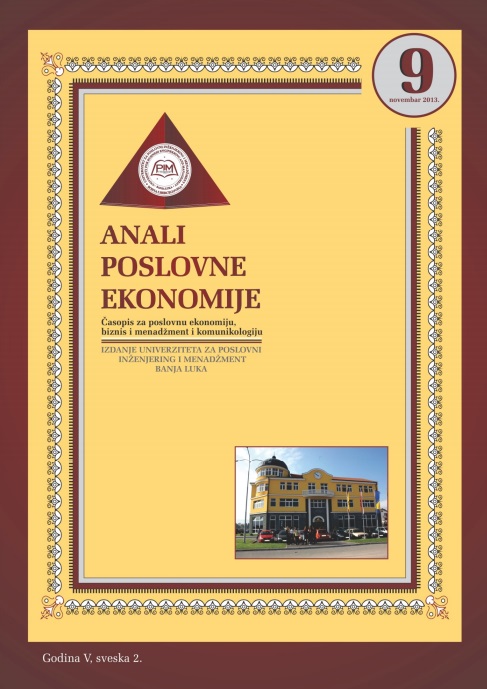ANALYSIS OF INFLATION PERSISTENCE IN SERBIA
DOI:
https://doi.org/10.7251/APE0913116MAbstract
In this paper, we analyzed inflation persistence in Serbia, both at the aggregatelevel as well as for the different components of the consumer price index. Theanalysis was done for the series of prices given on the quarterly basis for the periodfrom 2002q1 to 2013q2. We applied univariate autoregression model (AR) of order p,whereby sum of autoregression coefficients was used as a measure of inflationpersistence. In addition, special attention was paid to the problem of structural breaksin the series of inflation as it may overestimate the level of inflation persistence andcould give misleading signals. The importance of appropriate assessment of theinflation persistence stems from the fact that the impossibility of faster return ofinflation to the long-run equilibrium level, after external or domestic shock, hasimplications on the conducting of monetary policy and represents a major challengefor its effectiveness, especially in emerging countries like Serbia. If the persistence ofinflation is higher, monetary policy reaction should be stronger and proactive. If theestimated level and persistence of inflation is lower in comparison with previousempirical analysis, this could suggest that inflation expectations are now betteranchored, which is particularly important for countries with inflation targetingregime. Results of the analysis indicate that the inflation persistence in the Serbia ismodest and that is higher at the aggregate level compared to the simple average of thecomponents of the consumer price index. This is probably consequence of so-calledaggregation effect, since the highest persistency have the prices of those products withthe largest share in the consumer basket. In the case of Serbia, food prices have thehighest degree of persistence and the largest share in the consumer basket.Downloads
Published
2016-12-15
Issue
Section
Чланци

